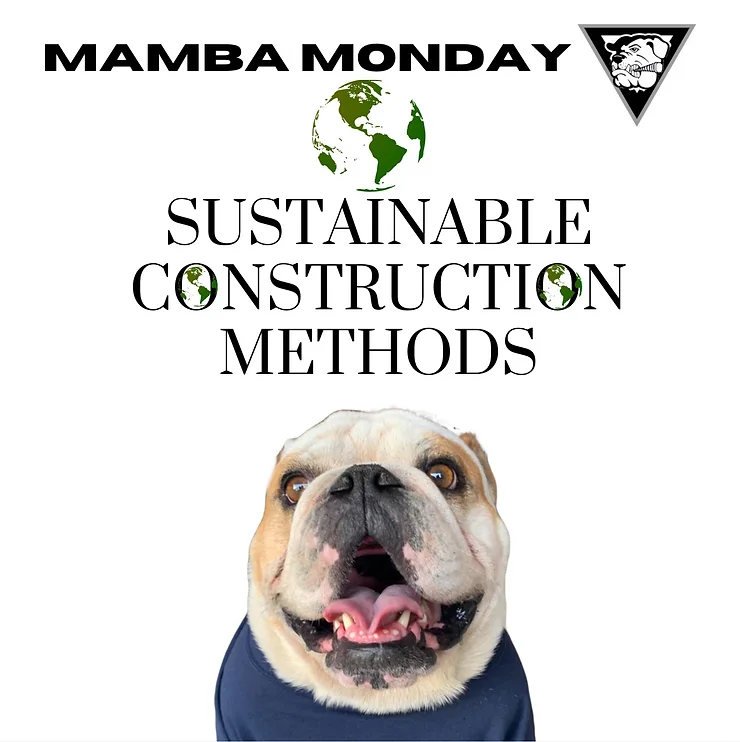This week on #MambaMonday, we are discussing the methods used in sustainable construction. Now that we know what materials are commonly used, the next step is to know how they use them.

Here are top five methods of sustainable construction:
IoT Integration
IoT or “Internet of Things” (yes, that’s what it’s actually called) provides facility managers access to data regarding the property. Small connected sensors can integrate with automated building systems to improve the sustainability of operations. IoT assists with ventilation and lighting levels along with base temperature, weather and CO2 readings This makes it easier on facility managers by keeping this data available to them. Along with assisting facility managers, IoT helps limit the environmental impact of new construction through smart architecture.
Synthetic Roof Underlayment
The conventional underlayment on roofs breaks down quickly. Underlayment is needed to keep moisture out of the building’s interior. Synthetic roof underlayment is an alternative weightless and durable form made from polymers and recycled scrap material. This material allows a longer lifespan of the underlayment. Overall the advantages of synthetic underlayment are the following:
- Longevity
- Durable
- High-Temperature tolerance
- Less heat retention
- Light-weight
Green Roofs
Green roofs are all-around better for the environment and cost-efficient. Layering the top of commercial properties with grass, plants, flowers, and bushes offers alternative ways to absorb stormwater into the soil and reduce the cost of heat and cooling in the property while also improving air quality. There are two forms of green roofs, intensive and extensive. The difference among these forms is based on the amount of vegetation used. Extensive green roofs can carry 25 pounds of vegetation per sqft., while intensive green roofs can carry up to 150 pounds per sqft. Green roofing provides individuals with an opportunity to better their community and their homes.
Passive Solar
Passive solar is a concept in which location is considered when designing. The passive solar design conserves solar energy during the winter and reduces heating during the summer. The design allows for the maximum use of natural resources. The passive solar design includes the following elements:
- Properly Oriented Windows
- Thermal Mass
- Distribution Mechanisms
- Control Strategies
Passive solar overall saves money for homeowners and promotes renewable energy.
Electrochromic Glazing
Electrochromic glass shifts from transparent to opaque based on the exterior environmental stimulation. In this way, we reduce the need for plastic blinds to block out the sun with the bonus of blocking out most UV rays. Electrochromic glass offers varieties for consumers. these varieties include tinting, translucent, or mirror like. The benefits of smart windows are:
- Energy cost savings
- Increased privacy
- Comfortable temperatures
- Security improvements
- Productivity Increase
These are some of the major sustainable construction methods that are currently being practiced in the industry. Stay tuned for our next Mamba Monday to learn more about sustainable construction.
Sources:
https://blog.senseware.co/2017/05/30/top-10-sustainable-building-methods
https://thesustainabilist.ae/iot-technology-the-future-of-smart-building/
https://sheffieldmetals.com/learning-center/synthetic-vs-felt-underlayment/
https://cabaus.org/2018/04/20/green-roofing-everything-need-know/






